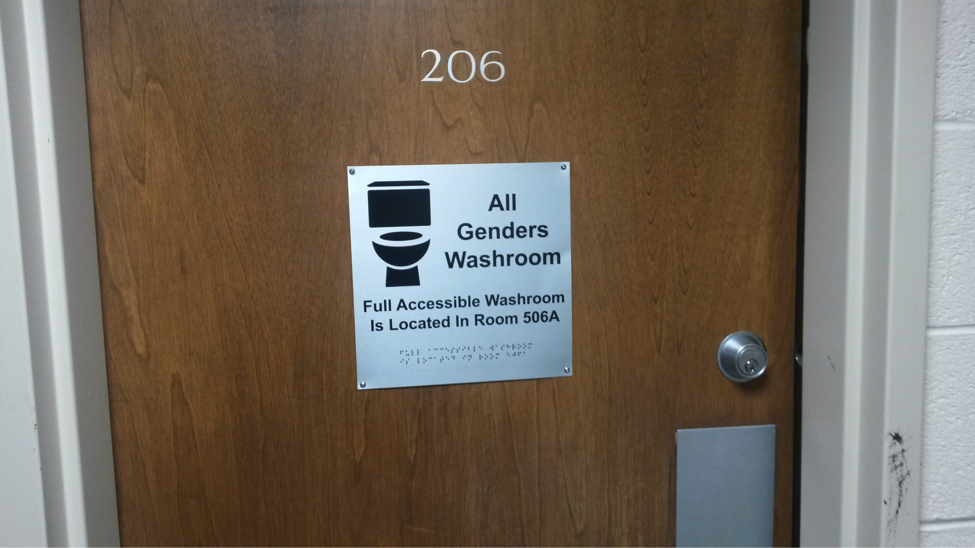Accessible Education: Mediating Physical Barriers
While many of the physical barriers described earlier may be outside of your control, there are still steps you can take before your class starts and throughout its duration to adapt to barriers and enhance classroom accessibility. Focusing on adjustments that are feasible for you to implement, even when these are small in comparison to architectural constraints, can still significantly contribute to the accessibility of your classroom environment, and are worth putting into action.
Below, we describe how the Accessible Education methods of Explicitness and Flexibility can support you in mediating physical barriers. Suggestions are grouped as follows:
- Explicitness During Course Planning
- Explicitness and Flexibility During Course Delivery
Explicitness During Course Planning
| Know Emergency Procedures |
|
| Anticipate and Report Barriers |
|
| Locate Washrooms |
|

*Washroom signage for an all gender washroom in Chester New Hall.*
Explicitness and Flexibility During Course Delivery
| Explicitly Discuss Barriers and Remedies |
|
| Foster a Flexible Class Atmosphere |
|
CASE STUDY:
Does technology help or hinder Accessible Education? Both!
| Helps | Hinders |
|
|
| Listen to Dr. Catherine Anderson describe how she enhances accessibility through blended learning and the features of our online learning management system, Avenue2Learn. | Reduce possible barriers by reviewing our Accessibility Hub’s resources on auditing and enhancing the accessible use of technology. |
Continue Your Learning
- Explore possibilities for physical accessibility in “practical” learning environments like labs, archives, studios, and other hands-on spaces (Council of Ontario Universities, 2017).
- Read more about the 2017 approval of Hamilton’s new Transgender Rights Protocol (Bennett, 2017; Craggs, 2017), and McMaster’s Trans Inclusion Project facilitated by the Equity and Inclusion Office, MSU Women and Gender Equity Network, and MSU Queer Students Community. One goal of this project is to ensure that all buildings on campus have at least one all gender washroom.
- Discover the “Tinker” equipment students, staff, and faculty can borrow from the McMaster library, including: origami paper, colouring supplies, and knitting kits.



